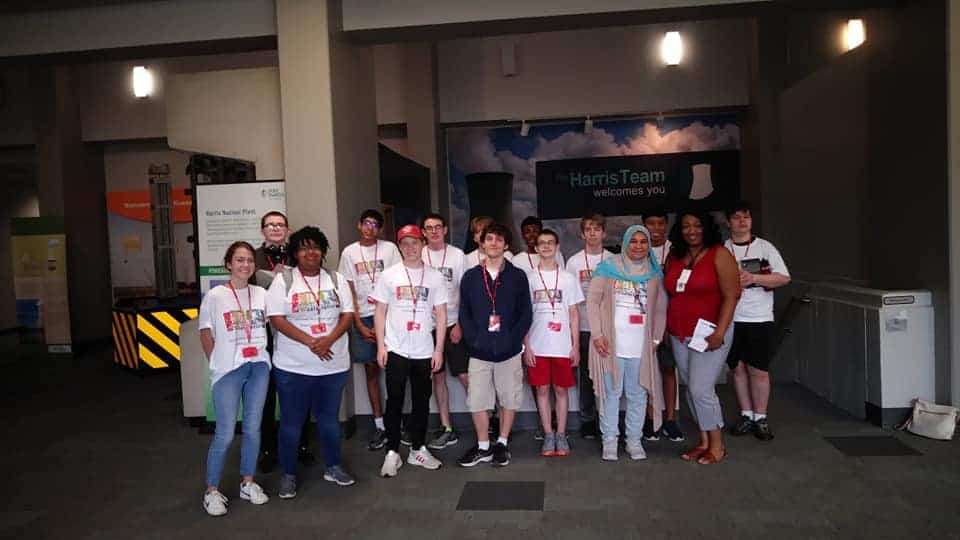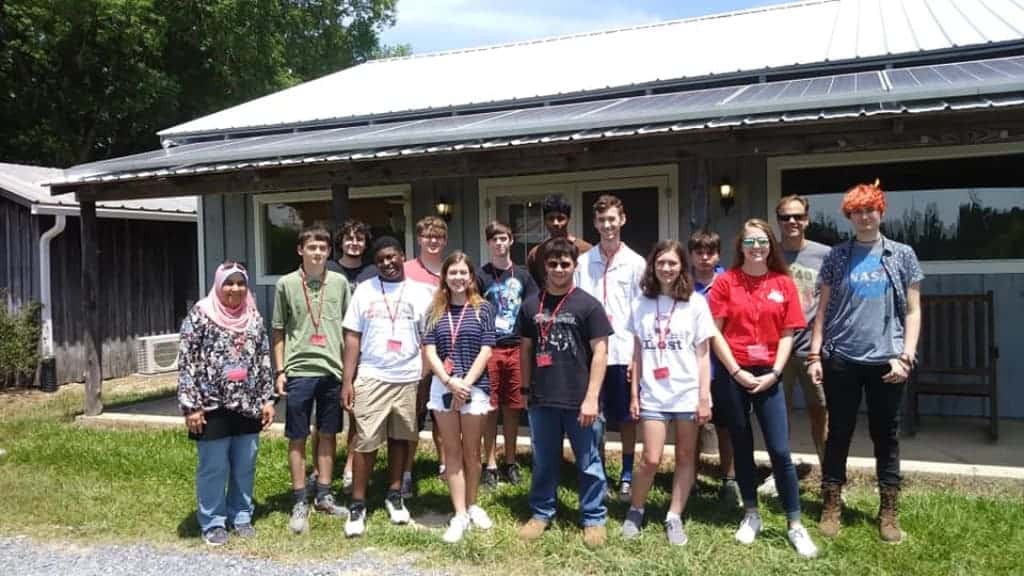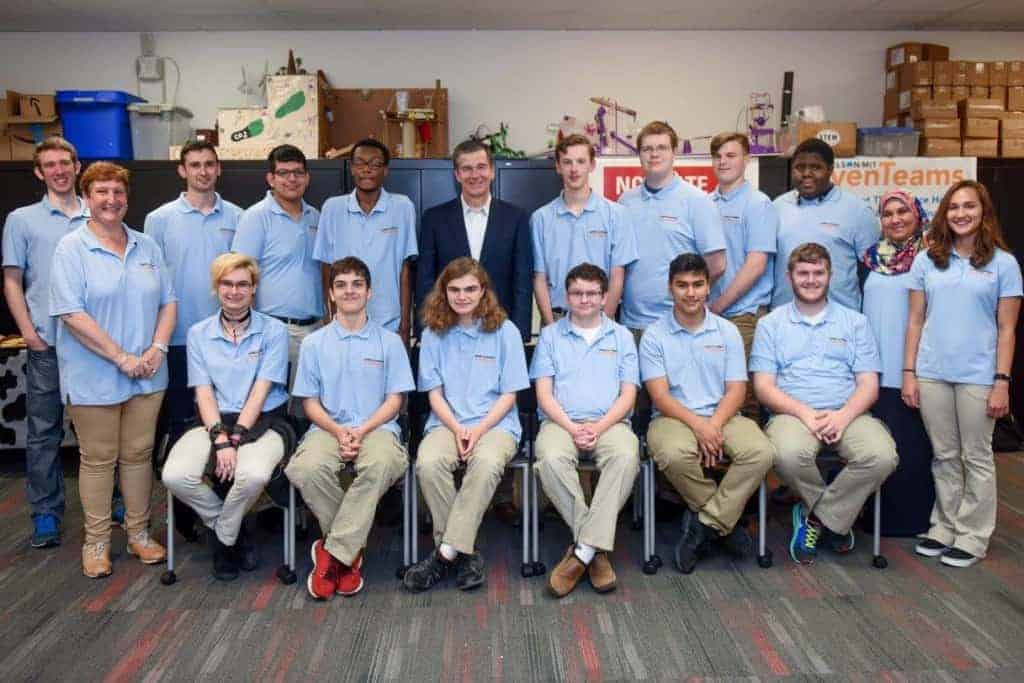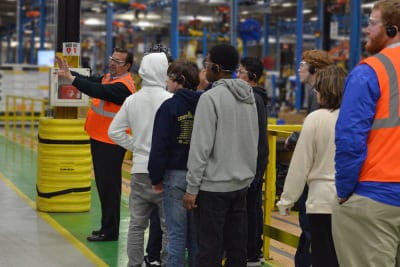
Catalyst: Creating Opportunities in STEM for Students with Disabilities is a program that I started four years ago to provide opportunities to students with disabilities interested in STEM careers. Located at the Science House, a government nonprofit housed within the N.C. State University Colleges of Sciences, Catalyst is one of the many excellent STEM programs offered to students and teachers in North Carolina. Famous scientists from Einstein to Edison had disabilities, yet there is a deficit of STEM workers with disabilities in today’s workforce.
According to US Bureau of Labor and Statistics, in 2018, approximately 80% of people with disabilities were unemployed. Only 15% hold a bachelor’s degree or higher. In North Carolina, 9.7% of people have disabilities, which is higher than the national average of 8.6%. Currently, in North Carolina public schools, there are 206,532 students with disabilities, and 20,517 of those students are in Wake County Public Schools alone.
People with disabilities live in poverty at more than twice the rate of people without disabilities and make up approximately 12% of the U.S. working-age population; however, they account for more than half of those living in long-term poverty. More STEM workforce readiness programs are needed for this population to provide economic and employment opportunities.
As a teacher in a public school, I saw that most science instruction was text-based. The curriculum lacked proper hands-on learning with labs, research, and engineering design projects. For many students with disabilities, language skills, especially reading comprehension, can be difficult. Text-based teaching reduces their chance for success and is not as engaging. STEM teachers have a very limited budget for supplies for hands-on activities, and many still teach with a focus on End of Course tests above all else.
STEM teachers with large class sizes have difficulty adapting materials to meet students with disabilities needs due to time constraints and a lack of understanding of how to best accomplish this. Most special education teachers, especially at the high school level, do not know the STEM content well, making it hard for them to adapt materials. Due to these factors, I decided to start Catalyst to help students with disabilities become successful in STEM careers.

Details of the program
Catalyst currently enrolls 24 students from 20 high schools in North Carolina. Catalyst works with a leadership team of partners that represent stakeholders from local schools, postsecondary institutions, museums, business, and industry. Our partners include the North Carolina Natural Science Museum, Wake Technical Community College, NC State University, North Carolina Department of Environment, Duke Energy, Fidelity, O2, and many more.
The students pay only $50 of the over $600 cost per student to attend summer sessions and Saturday sessions during the school year. The rest of the program is funded through a generous grant from Duke Energy Foundation. We serve students who have disabilities that are enrolled in either regular education settings (AP, honors, and regular courses) or the occupational course of study program on the high school diploma track.
Catalyst has four main goals. The first goal is to prepare students with disabilities to enter postsecondary degree programs in STEM fields. The project is designed to propel students toward postsecondary STEM degree programs by strengthening content knowledge and providing information that will help participants earn college degrees.
This summer and coming school year, we focused on energy. Students visited Montgomery Farm, one site of O2 emc that has a sustainable solar farm and also raises sheep. The students visited the Geothermal Plant used at the City of Raleigh Transportation Depot. They learned about gas from landfills with an engineer at Wake County Solid Waste Services. Duke Energy, in addition to their generous donation, hosted us at the Harris Energy and Environmental Center to teach about nuclear energy and other forms of energy.
We also visited N.C. State’s Nuclear Energy Reactor. Students learned about how electricity is produced, solar and hydroelectricity, and energy economics from the N.C. State Electrical Engineering department. Students worked on engineering challenges on hydroelectric energy, wind power, making batteries, and biofuels. During our Saturday sessions this school year, students will develop and research innovation projects on energy based on what they learned with a graduate students at N.C. State. In addition, they learned about a variety of STEM content and careers, including civil engineering with the N.C. State Civil Engineering department and coding and programming with the N.C. State Computer Science department.
The second goal of Catalyst is to reduce the unemployment rate among people with disabilities. It is critical to help individuals with disabilities be competitive applicants for career opportunities so they do not fall into a life of poverty. Students learned a wide range of workforce readiness skills from how to dress in an interview to communication skills from the N.C. State Career Center. These skills are incorporated in every session and also include critical thinking, problem solving, independent thinking, collaboration, perseverance, good work ethic, advocacy, and more.
The third goal is to increase the applicant pool of highly-qualified STEM workers in North Carolina. Students with disabilities can help end STEM workforce deficits in the state by growing the number of residents who have the appropriate content preparation to enter a STEM career. Present and projected STEM vacancies exceed the number of highly-qualified applicants available to fill such openings. Catalyst is an effort to develop STEM competencies among individuals who frequently struggle to find meaningful employment.
We want students to get workforce STEM opportunities to help build their competency. This year, we added STEM internships which lasted anywhere from all school year to two weeks. They included biotechnology, meteorology, computer science, environmental science, industrial engineering, aerospace engineering, physics, and wearable devices. The internships built students competency not only in STEM content but also in workforce readiness skills. In addition, they helped employers see how successful students with disabilities can be an asset to their organizations. The internship supervisors were very pleased at the interns’ work performance and capabilities and view them as potential future employees.
The fourth goal is to increase workforce diversity and incite opportunities for industry innovation and growth. We want to change the mindset of people with disabilities as not the ones needing the help but the ones that can make the world a better place. They can make a positive addition to industry, government, and higher education. Students are taught how to advocate and present work publicly. The students have had booths at various events at the North Carolina Natural Science Museum and teach the public about STEM topics. They make these presentations themselves. The students also met with Gov. Roy Cooper, Gov. Pat McCrory, and Sen. Thom Tills to share their work and advocate for changes in STEM education for students with disabilities in North Carolina. It is important that the students learn self-advocacy and self-determination by using their voices to highlight what they want and need, not what others determine for them.

Looking to the future
The students have been successful these past four years. They were winners of the National 2017 Lemelson-MIT InvenTeam Competition. The students traveled to Boston to present a mat they invented that screens for lameness in cows with an app to notify farmers. This device costs less than $1,000 — a huge savings compared to the current one on the market which retails for over $100,000. They also won the technical award and were the first winning team ever at MIT composed entirely of students with disabilities. They all presented at MIT and received a $10,000 grant to build their invention, which we hope to patent. Last summer, they were invited to the U.S. Patent Office in Washington D.C. for a special program on patents and innovation. So far, all graduating seniors have gone on to STEM educational pathways.
We are looking to expand this program to help more students as funding permits, and we are currently developing new programming ideas and grants for expanding opportunities for these students. Statewide, students with disabilities are still mostly being ignored and underserved in STEM educational pathways and careers.
It is time to acknowledge their potential and provide proper instruction to give them opportunities to reach their goals and dreams. We need to help them become active participants in the workforce, which will also help them avoid a life of poverty. The students received a letter of commendation from President Obama where he wrote to them: “Young people like you are tomorrow’s leaders — you inspire me and give me tremendous hope for the future. Michelle and I wish you all the best.”
Let us all work together to help these students have the experiences and opportunities so they can continue to do so.
For more information contact Joann Blumenfeld at jblumenfeld@wcpss.net and follow Catalyst InvenTeam on Facebook.
Editor’s note: The Duke Energy Foundation supports the work of EducationNC.


